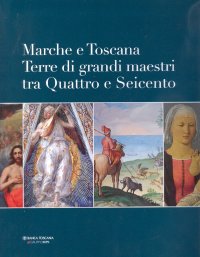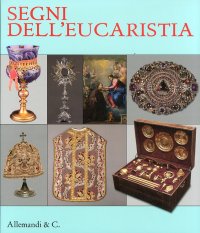Aldo Manuzio. Il Rinascimento di Venezia
Venezia, Gallerie dell'Accademia, March 19 - June 19, 2016.
Edited by Beltramini G. and Gasparotto D.
Venezia, 2016; paperback, pp. 373, b/w and col. ill., cm 20x25.
(Cataloghi).
series: Cataloghi
Other editions available: English edition 88-317-2380
ISBN: 88-317-2361-8
- EAN13: 9788831723619
Subject: Collections,Essays (Art or Architecture),Graphic Arts (Prints, Drawings, Engravings, Miniatures),Monographs (Painting and Drawing)
Period: 1400-1800 (XV-XVIII) Renaissance
Places: Venetian,Venice
Languages: 
Weight: 1.23 kg
The exhibition retraces a unique and unrepeatable period in the history of European and Western culture, during which the book proved itself capable of changing the world. This gave rise to the Renaissance in Venice, a vibrant city - with more than 150,000 inhabitants in the sixteenth century it was one of the richest and most densely populated on the continent - where every kind of artistic language was able to find its most effective expression in the space of just a few decades. In the sixteenth century Venice won and definitively asserted its role as hinge between East and West, moving from being a simple platform for commercial trade to a mixing pot of cultures, traditions and knowledge. Making the most of the prodigious logistical network that only a trading city like Venice could depend on, Manuzio managed to conceive of and achieve his extraordinary programme of making the great classics available to scholars and writers for the first time: those of Greek culture, from Homer to Aristotle, Sophocles, Euripides and Thucydides, and then collecting the writings in Latin of Virgil, Cicero, Horace, Ovid, Catullus, Propertius, Lucretius, Juvenal and Martial, along with those of Jews and Italians in the new vernacular literature. It was precisely thanks to Manuzio and his work with Pietro Bembo that the vernacular was asserted alongside Latin as the language of the contemporary throughout Europe, being confirmed as such by the criteria that chose Dante, Petrarch and Boccaccio as models. The circulation of this wealth of writings and ideas not only helped create a common European culture, capable of integrating the classical Greek-Roman sphere with the modern, contemporary world, but also encouraged the emergence of absolutely new subjects and motives in the figurative arts; masters like Giovanni Bellini, Cima da Conegliano and Jacopo de' Barbari drew clear inspiration from the Greek and Latin classic texts, now finally also easily available to a secular readership. Following the rediscovery of Greek and Latin poetry, painting now also looked towards nature with new eyes: the medieval ideas that had painted a hard, hostile nature populated with wild beasts having been abandoned, art opened up to portraying the landscape as the cradle of civilisation, as an earthly paradise in which man is destined to live. The exhibition will document this move through the landscapes of Giorgione, the drawings of the young Titian, the engravings of Giulio Campagnola and the bronzes of Andrea Briosco. An important part of the exhibition will be dedicated to the intense relationship that tied Aldo to the culture of northern Europe and to Erasmus of Rotterdam. The Dutch philosopher - who lived in Venice, guest of the Manuzio family for almost a year, in order to publish the new and definitive edition of his Adagia - not only appreciated the care taken with the Aldine editions, he thought that having his works printed by Manuzio was of fundamental importance for the circulation of his thinking throughout Europe. The exhibition will also present the Hypnerotomachia Poliphili, Aldo Manuzio's most famous and refined illustrated book, with imaginative woodcuts possibly made from drawings by the illuminator Benedetto Bordon.












